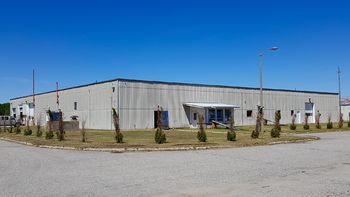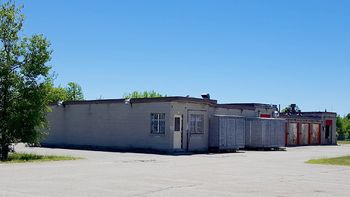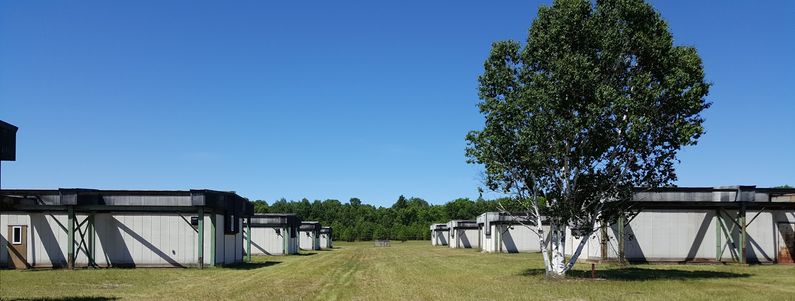North Bay CFB BOMARC Missile Site
|
North Bay CFB BOMARC Missile Site (1962-1972) - A Cold War era Royal Canadian Air Force (RCAF) BOMARC Missile Site established in 1962 near North Bay, Ontario. This BOMARC Missile Site closed in 1972.
North Bay CFB BOMARC Site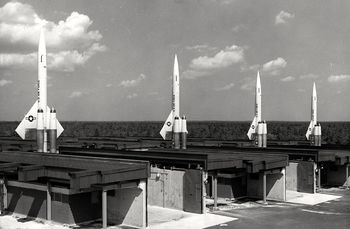 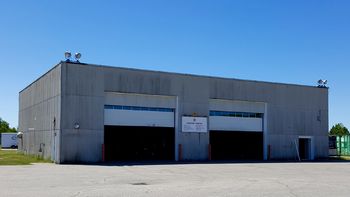 This site was constructed as an RCAF BOMARC Missile Site in December 1962 at a site in North Bay, Ontario. The site was built with above-ground missile launchers for 28 BOMARC B Model missiles. Each missile was fitted with a U.S. W-40 nuclear warhead and propelled by two ramjet engines at 1,975 mph toward its target. The armed missiles were stored horizontally in 28 coffin-like launch buildings, erected to a vertical position for launch, and propelled into the air initially by a rocket motor until the ramjet engines started. The A Model missiles were launched with a volatile liquid fuel rocket motor while the B Model missiles used a much more stable solid-fuel rocket. The North Bay site used the B Model exclusively. BOMARC missiles were launched and guided to their targets by a SAGE Direction Center and later the backup BUIC III System sites. The local BOMARC launch site had no control over the launch or the intercept. The North Bay BOMARC missiles were under the control of the nearby North Bay SAGE Direction Center DC-31 and later the backup BUIC III sites at RCAF Station Saint Margarets and RCAF Station Senneterre. The North Bay site was manned by the Canadian 446 Surface to Air Missile (SAM) Squadron and the USAF Det 1, 425 Munitions Maintenance Squadron.  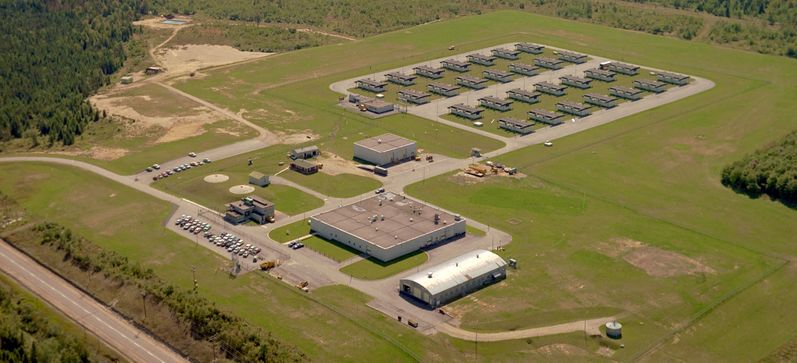
Nuclear Warhead Controversy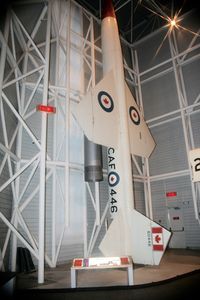 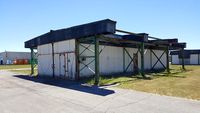 The Canadian BOMARC sites were the subject of controversy with regard to the nuclear warheads since the 450-mile range of a deployed nuclear-armed missile would probably require a nuclear detonation over Canada. Initially, the Canadian Government would not allow U.S. warheads on Canadian soil. The controversy was resolved in late 1963 and the BOMARC nuclear warheads were placed at the two Canadian BOMARC sites under American control with a complicated set of procedures. The American USAF 425th Munitions Maintenance Squadron was responsible for all the U.S. nuclear weapons in Canada and provided Detachment #1 at North Bay to (1) maintain 24 hours/day custody of the warheads until released, (2) Operate the U.S. Crypto equipment that gave the release authorization, (3) store, maintain and monitor the warheads, (4) Assure safety compliance, and (5) provide maintenance support to the Canadian Commander. Each detachment was authorized 6 officers and 42 enlisted personnel. The W-40 nuclear warheads actually remained mounted on the BOMARC missiles while they were in the launch buildings so at any given time there were 28 ready to go nuclear warheads at North Bay, ready to be launched by an electronic signal from the nearby North Bay SAGE Direction Center DC-31. The warheads required some periodic maintenance and every 90 days or so each missile warhead was cycled through the USAF maintenance facility in the Ordnance building. That facility had nine "cells" for warhead storage/maintenance or spares. Adjacent to the storage/work "cells" was the USAF workspace for the 24/7 crew that maintained custody of the weapons. The USAF Ordnance building was known as the Special Ammunition Storage (SAS) facility and all activities involving the Nuclear warheads there and on the missiles were under the two-man rule that required two trained U.S. airmen to be present at all activities involving the warheads. The U.S. nuclear warheads were first delivered to the North Bay site between 31 Dec 1963 and 11 Jan 1964 and removed between 4 Apr 1972 and 15 May 1972. The first nuclear warhead arrived on site about 10 pm on 31 Dec 1963. The unit passed the first Operational Readiness Inspection (ORI) on 29 Feb 1964. The nuclear operational dates for this site began about 13 Jan 1964 and ended on 31 Mar 1972.
ClosureNo missiles were ever fired from the North Bay BOMARC site but selected crews traveled to the U.S. and successfully fired and intercepted target drones with non-nuclear warheads. The missiles at North Bay remained on alert until the site ceased operations on 31 Mar 1972. The warheads and missiles were shipped back to the U.S. and the site closed.
Current StatusLaunch facility in private hands and repurposed as a storage company in North Bay, Ontario. Most of the buildings remain and are in use.
See Also:
Sources:
Links: Visited: 29 Jun 2016
| ||||||||||||||||||||||||||||||||||||||||||||||||||||||||||||||
